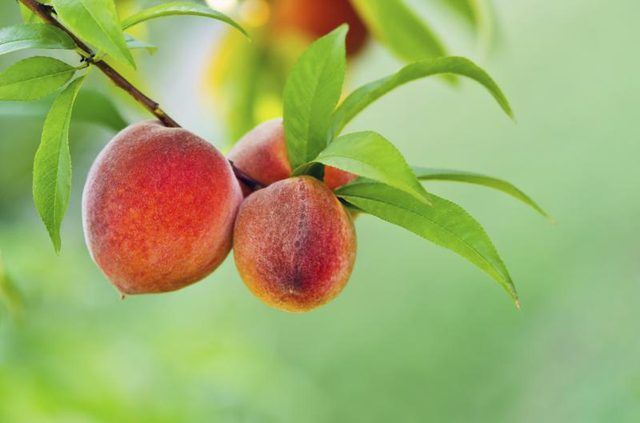Bulbs
Flower Basics
Flower Beds & Specialty Gardens
Flower Garden
Garden Furniture
Garden Gnomes
Garden Seeds
Garden Sheds
Garden Statues
Garden Tools & Supplies
Gardening Basics
Green & Organic
Groundcovers & Vines
Growing Annuals
Growing Basil
Growing Beans
Growing Berries
Growing Blueberries
Growing Cactus
Growing Corn
Growing Cotton
Growing Edibles
Growing Flowers
Growing Garlic
Growing Grapes
Growing Grass
Growing Herbs
Growing Jasmine
Growing Mint
Growing Mushrooms
Orchids
Growing Peanuts
Growing Perennials
Growing Plants
Growing Rosemary
Growing Roses
Growing Strawberries
Growing Sunflowers
Growing Thyme
Growing Tomatoes
Growing Tulips
Growing Vegetables
Herb Basics
Herb Garden
Indoor Growing
Landscaping Basics
Landscaping Patios
Landscaping Plants
Landscaping Shrubs
Landscaping Trees
Landscaping Walks & Pathways
Lawn Basics
Lawn Maintenance
Lawn Mowers
Lawn Ornaments
Lawn Planting
Lawn Tools
Outdoor Growing
Overall Landscape Planning
Pests, Weeds & Problems
Plant Basics
Rock Garden
Rose Garden
Shrubs
Soil
Specialty Gardens
Trees
Vegetable Garden
Yard Maintenance
How to Identify Peach Tree Disease
How to Identify Peach Tree Disease. Grown for their decadent fruit, peach trees (Prunus persica) make a productive addition to home orchards in U.S. Department of Agriculture hardiness zones 4 to 8. As with other fruit trees, peaches can succumb to a number of diseases, some of which can be kept from spreading if caught in their early stages....

Grown for their decadent fruit, peach trees (Prunus persica) make a productive addition to home orchards in U.S. Department of Agriculture hardiness zones 4 to 8. As with other fruit trees, peaches can succumb to a number of diseases, some of which can be kept from spreading if caught in their early stages. Making a careful inspection of a tree's growth, leaves, bark and flowers can help gardeners identify some of the more common problems that strike peach trees.
Faulty Fruit
Fruit that is malformed, discolored or won't ripen is an indication of disease in the peach tree. Fruit growing on a branch infected with brown rot will fail to ripen, but within the unripe fruit are spores of the disease that can spread to other parts of the tree. Dark, velvety spots that measure about 1/4 inch in diameter on peaches signal a peach scab infection. The lesions can join to make larger spots. If peeled, the fruit is still edible. Bacterial spot and anthracnose may look similar to peach scab, but the lesions are craggy and not velvety. If unripened fruit develops a white powder, the tree has been hit with the fungus powdery mildew. The mildew often goes away on its own but can leave the fruit discolored.
Deformed Foliage
As its name indicates, peach leaf curl causes deformity in the leaves of peach trees. In early stages, the leaves appear puckered, curled or thicker than normal and may turn red. The fungus eventually causes the leaves to yellow and fall. Because trees rely on leaves to photosynthesize and provide energy, the peach tree will be weakened and produce a low-quality crop of peaches. Unfortunately, once this disease strikes, it cannot be treated.
Spotty Leaves
Dark spots on leaves should alert gardeners to a possible infection taking hold of the peach tree. When bacterial spot infects a tree, small reddish-purple spots appear. Looking closely, the spot will have a white center or the center of the spot may have a hole. Left long enough, the leaves will eventually yellow and fall off. With bacterial spot, the fruit will also develop spots that give the peaches a craggy appearance. Keeping trees nourished and in healthy soil is the best prevention for this hard-to-treat disease.
Blistered Bark
A close look at the bark or the tree can reveal an infection. Even trees that appear healthy should be examined for small blisters. The blisters indicate the fungal disease gummosis and can be seen most clearly in the fall or early spring when branches are bare. A gummy, resinous substance may ooze from the blisters. Eventually, the affected areas appear sunken and the bark turns scaly. Although it primarily shows as lesions on fruit, peach scab can also present as spots on twigs. The spots start out as light brown but turn to reddish brown in the second year of infection.
Buds and Blooms
When a peach tree has been infected with brown rot, the tree will appear healthy until it begins to bloom. Soon after blooming, the flowers wilt and turn brown. Upon closer inspection, gardeners may notice 1- to 3-inch cankers on the shoots of the infected flowers. Once these cankers appear, gardeners should remove the infected branches as soon as possible since the cankers will ooze a gummy substance that, if left to spread, can infect other areas of the tree.
Slow and Stunted Growth
Peach trees that show poor or stunted growth regardless of receiving enough nutrients, sunshine and water may have been infected with a soil-dwelling fungus or bacteria. If this happens, dig into the soil near the roots. The presence of green or woody galls is a sign of the bacterial disease crowngall. These galls may also appear above the soil line if the tree has been infected long enough. Stunted shoots and decayed areas near the roots indicate crown and root rot. Slow-growing trees that don't put up side shoots may be infected with the fungal disease oak root rot. This disease can also cause weak, broken branches.